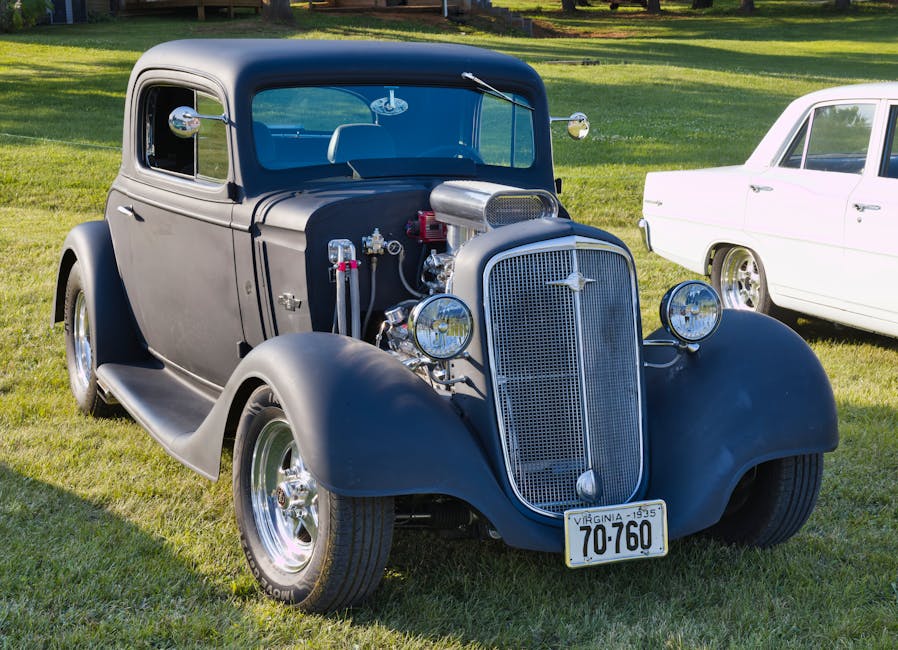Behind the Scenes: Organizing a Successful Antique Car Show

Organizing a successful antique car show involves meticulous planning, coordination, and attention to detail. From selecting the perfect venue to ensuring a smooth registration process for participants, every aspect must be carefully managed. The goal is to create an engaging and enjoyable experience for both car enthusiasts and casual visitors. This guide will explore the critical steps and considerations in putting together an outstanding antique car show.
Choosing the Right Venue
The venue is one of the most crucial aspects of organizing an antique car show. It should be spacious enough to accommodate a variety of vintage vehicles and provide ample space for attendees to walk around comfortably. Popular choices include fairgrounds, large parking lots, or public parks.
When selecting a venue, consider the following factors:
- Accessibility: Ensure the location is easy to reach for participants and attendees.
- Amenities: Check for restrooms, food stalls, and seating areas.
- Parking: Adequate parking space for both participants and visitors is essential.
- Security: Implement measures to safeguard valuable antique cars and ensure the safety of attendees.
It's also beneficial to visit potential venues in person to assess their suitability. Engage with venue managers early in the planning process to secure the desired date and negotiate terms.
Planning and Coordination
Effective planning and coordination are vital for a successful antique car show. Start by forming a dedicated team to handle various responsibilities, such as marketing, logistics, and participant coordination. Assign clear roles and establish regular meetings to keep everyone on track.
Create a detailed timeline that outlines all necessary tasks leading up to the event. Key milestones might include:
- Securing permits and licenses.
- Booking vendors and entertainment.
- Promoting the event through various channels (social media, local newspapers, etc.).
- Setting up online registration for participants.
Communication is key. Maintain open lines of communication with team members, vendors, sponsors, and participants. Utilize tools like project management software or shared calendars to keep everyone informed.
Marketing and Promotion
Attracting a large crowd requires effective marketing strategies tailored to your target audience. Use a mix of traditional and digital marketing methods to reach potential attendees.
Consider these promotional tactics:
- Social Media: Create event pages on platforms like Facebook and Instagram. Share regular updates, sneak peeks of participating cars, and behind-the-scenes content.
- Email Campaigns: Send out newsletters to your mailing list with event details and registration information.
- Local Media: Engage with local newspapers, radio stations, and TV channels for coverage.
- Partnerships: Collaborate with local businesses, car clubs, and influencers to broaden your reach.
A well-designed website with essential information about the event can also boost attendance. Include details like date, time, venue location (with maps), registration forms, FAQs, and contact information.
Day-of-Event Management
The day of the antique car show requires careful orchestration to ensure everything runs smoothly. Arrive early with your team to set up signs, booths, stages, and other necessary infrastructure.
Create a comprehensive schedule that includes:
| Time | Activity |
|---|---|
| 8:00 AM | Gates Open for Participants |
| 9:00 AM | Public Admission Begins |
| 11:00 AM | Awards Judging Starts |
| 1:00 PM | Awards Ceremony |
| 4:00 PM | Show Closes |
This schedule helps ensure everyone knows their roles and responsibilities throughout the day. Station volunteers at key points around the venue to assist with questions or issues that may arise.
Catering services or food trucks can enhance the experience for attendees. Provide entertainment such as live music or demonstrations related to antique cars to keep guests engaged. Ensure there's a first aid station on-site for emergencies.
An effective antique car show requires careful planning, promotion, and execution. Selecting an accessible venue with necessary amenities sets the foundation for success. Coordinating tasks among a dedicated team ensures smooth operations leading up to the event day. Marketing efforts should leverage both traditional media and digital platforms to attract a broad audience. On the day of the event, it's crucial to follow a well-organized schedule while offering engaging activities for visitors. By adhering to these guidelines, you can create an unforgettable experience that resonates with both car enthusiasts and casual attendees alike. With proper execution, your antique car show can become an anticipated annual tradition in your community.